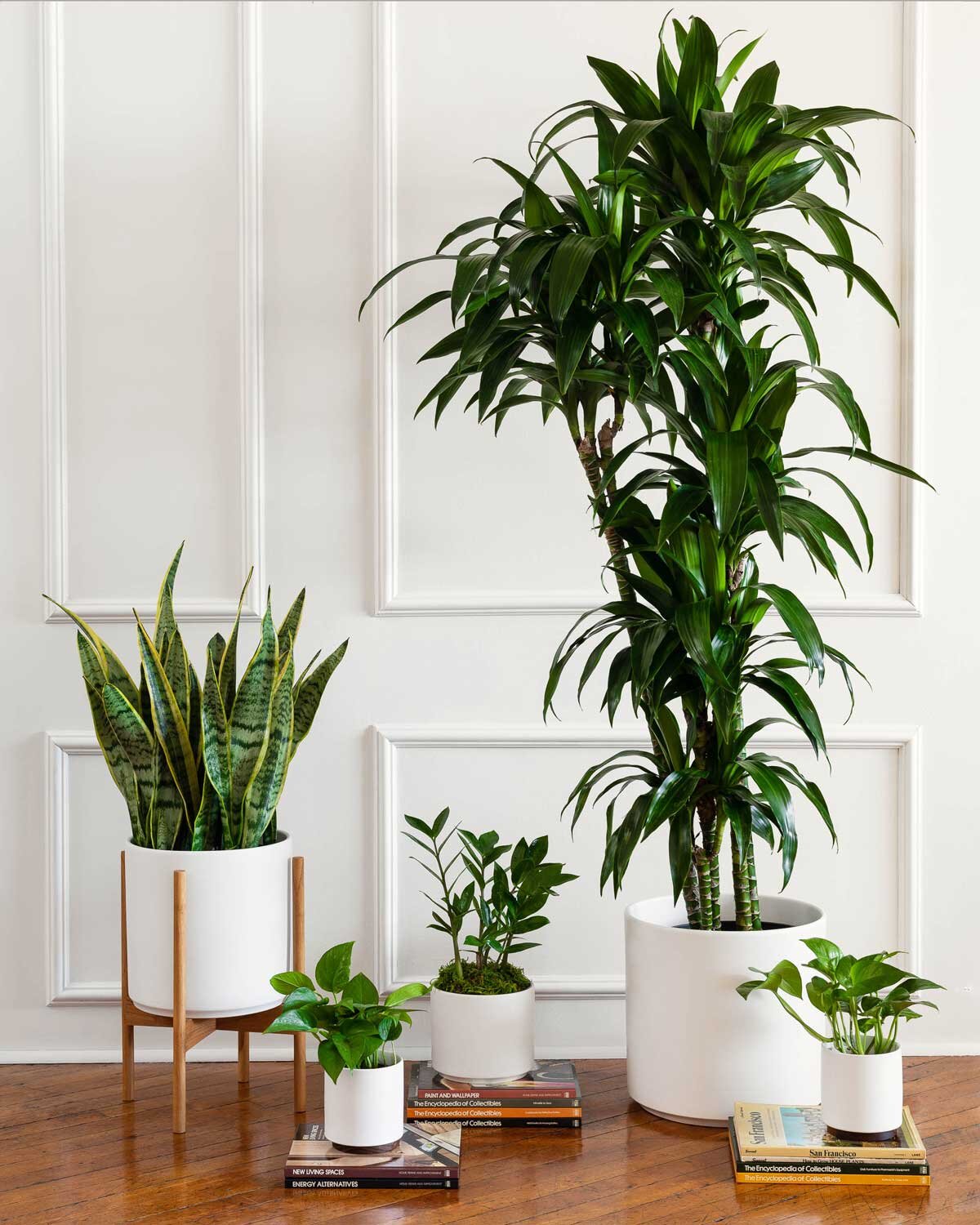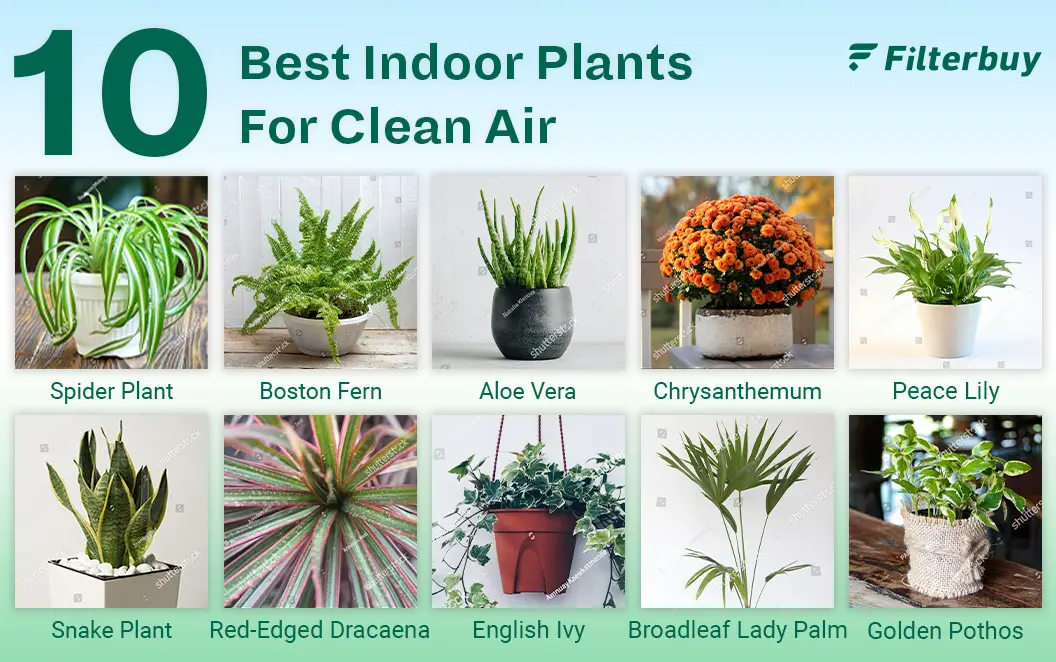The Peace Lily purifies the air the most among house plants. It effectively removes toxins like formaldehyde and benzene.
House plants not only enhance decor but also improve indoor air quality. The Peace Lily stands out for its ability to filter harmful toxins from the air. Originating from tropical regions, this plant is both attractive and functional. Its lush green leaves and white blooms make it a popular choice for homes and offices.
The Peace Lily is low-maintenance and thrives in indirect sunlight, making it ideal for various indoor environments. Regular watering and occasional fertilizing keep it healthy. By introducing a Peace Lily into your space, you promote a cleaner and healthier atmosphere.
Introduction To Air-purifying House Plants
House plants do more than decorate your home. They also purify the air. Breathing clean air is crucial for good health. Some house plants excel at cleaning the air. They remove toxins and produce fresh oxygen. Let’s explore these amazing plants.
Importance Of Indoor Air Quality
Indoor air quality affects health and well-being. Poor air quality can lead to headaches, allergies, and fatigue. Fresh, clean air boosts concentration and mood. Many homes have air pollutants from furniture, cleaning products, and more. Plants can help combat these pollutants.
How Plants Improve Air
Plants absorb carbon dioxide and release oxygen. They also remove harmful chemicals like benzene and formaldehyde. Through their roots and leaves, plants filter the air. NASA conducted a study on plants that purify air. This study identified the best plants for indoor air quality.
- Spider Plant: Great for removing formaldehyde.
- Peace Lily: Effective at removing mold spores.
- Snake Plant: Converts CO2 to oxygen at night.
- Aloe Vera: Clears benzene and formaldehyde.
These plants are easy to care for. They thrive in most indoor environments. Keep them in your home for cleaner air.
| Plant Name | Key Air-Purifying Quality |
|---|---|
| Spider Plant | Removes formaldehyde |
| Peace Lily | Removes mold spores |
| Snake Plant | Converts CO2 to oxygen at night |
| Aloe Vera | Clears benzene and formaldehyde |
Adding these plants to your home can improve air quality. They are not just beautiful but also practical. Enjoy fresh, clean air with these natural air purifiers.

Credit: www.healthline.com
Spider Plant
The Spider Plant, known as Chlorophytum comosum, is a popular houseplant. Its green and white striped leaves make it attractive. But its beauty is not its only advantage. This plant also helps purify indoor air.
Key Features
- Long, arching leaves
- Produces small white flowers
- Easy to care for
- Tolerant of low light
- Grows quickly
- Produces baby plants called “spiderettes”
Air-purifying Benefits
The Spider Plant is a top air purifier. It removes harmful toxins. It is effective against formaldehyde, carbon monoxide, and xylene.
| Pollutant | Removal Rate |
|---|---|
| Formaldehyde | 90% |
| Carbon Monoxide | 96% |
| Xylene | 86% |
The Spider Plant also improves humidity. It releases moisture into the air. This helps combat dry indoor environments.
Place this plant in your home or office. It will improve your air quality. It is also a low-maintenance choice. Enjoy cleaner air with a Spider Plant.
Peace Lily
The Peace Lily is a popular houseplant known for its beautiful white blooms and dark green leaves. But did you know it’s also a powerful air purifier? This plant can improve the air quality in your home, making it a favorite among indoor gardeners.
Key Features
- Scientific Name: Spathiphyllum
- Light Requirements: Low to moderate light
- Watering: Weekly, more in summer
- Soil Type: Well-draining potting mix
- Size: Typically grows up to 16 inches
Air-purifying Benefits
The Peace Lily excels in removing harmful toxins from the air. It can filter out chemicals like formaldehyde, benzene, and trichloroethylene. This makes it an excellent choice for improving indoor air quality.
| Harmful Chemical | Percentage Removed |
|---|---|
| Formaldehyde | 60% |
| Benzene | 80% |
| Trichloroethylene | 50% |
These numbers show the Peace Lily’s effectiveness. Placing it in your home can lead to cleaner air and better health.
Snake Plant
Are you looking for an easy-to-care-for house plant that also purifies the air? The Snake Plant might be your perfect match. Known scientifically as Sansevieria trifasciata, this plant is a favorite for its hardy nature and striking appearance. But what sets it apart is its exceptional air-purifying capabilities.
Key Features
The Snake Plant is a resilient house plant. It is also known as the Mother-in-Law’s Tongue due to its sharp, upright leaves. Here are some key features:
- Leaves: Thick, upright, and variegated with green and yellow.
- Height: Can grow up to 3-4 feet indoors.
- Light: Thrives in low to bright indirect light.
- Water: Requires minimal watering. Allow soil to dry between waterings.
- Temperature: Prefers a range between 60-75°F (15-24°C).
Air-purifying Benefits
The Snake Plant is renowned for its air-purifying benefits. NASA’s Clean Air Study highlights it as one of the top plants for indoor air quality. Here’s how it helps:
- Removes Toxins: It filters harmful toxins like formaldehyde, xylene, and toluene.
- Produces Oxygen: Unlike most plants, it releases oxygen at night, making it ideal for bedrooms.
- Improves Air Quality: It absorbs carbon dioxide and releases fresh oxygen, enhancing indoor air quality.
Incorporating a Snake Plant into your home not only beautifies your space but also creates a healthier living environment.
Aloe Vera
Aloe Vera is not just a popular plant for skin care. It also purifies the air in your home. This succulent plant is easy to care for and has many benefits. Let’s dive into the amazing features and air-purifying benefits of Aloe Vera.
Key Features
- Low maintenance: Aloe Vera needs little water and sunlight.
- Medicinal use: Its gel treats burns and cuts.
- Longevity: Aloe Vera can live for many years.
- Decorative: Its spiky leaves add a unique look to any room.
Air-purifying Benefits
Aloe Vera is a top air-purifying plant. It cleanses the air of toxins. Here are some key air-purifying benefits:
- Removes formaldehyde: Aloe Vera absorbs this harmful toxin.
- Filters benzene: It helps remove benzene from the air.
- Improves air quality: Aloe Vera enhances the overall air quality.
Aloe Vera is a great choice for better indoor air. Its easy maintenance and many benefits make it a must-have.

Credit: blog.leonandgeorge.com
Boston Fern
The Boston Fern is a popular house plant known for its lush, feathery fronds. This plant is not only attractive but also excellent for purifying indoor air. It thrives in humid environments and is relatively easy to care for, making it a favorite among plant enthusiasts.
Key Features
- Scientific Name: Nephrolepis exaltata
- Light Requirement: Indirect sunlight
- Watering: Keep soil consistently moist
- Humidity: Prefers high humidity
- Temperature: Ideal range is 60-75°F (15-24°C)
- Growth: Can grow up to 3 feet tall and wide
Air-purifying Benefits
The Boston Fern is renowned for its air-purifying capabilities. It efficiently removes harmful toxins from the air, including:
- Formaldehyde
- Xylene
- Toluene
These toxins are commonly found in household items and can affect indoor air quality. The Boston Fern absorbs these pollutants and releases clean oxygen, creating a healthier living environment.
Let’s summarize the key benefits of having a Boston Fern in your home:
| Feature | Benefit |
|---|---|
| Removes Toxins | Improves air quality |
| Releases Oxygen | Enhances breathing |
| Humidifies Air | Prevents dryness |
Adding a Boston Fern to your home can significantly improve the air quality. Its ability to remove toxins and release fresh oxygen makes it an excellent choice for any living space.
Comparing The Top 5 Choices
Choosing the best house plant for air purification can be tricky. Let’s compare the top 5 choices to help you decide. These plants not only beautify your home but also improve air quality. We’ll look at their effectiveness in air purification and ease of care.
Effectiveness In Air Purification
| Plant | Air Purification |
|---|---|
| Spider Plant | Removes carbon monoxide, xylene, and formaldehyde. |
| Snake Plant | Absorbs toxins such as formaldehyde and benzene. |
| Peace Lily | Eliminates mold spores, formaldehyde, and trichloroethylene. |
| Boston Fern | Removes formaldehyde and xylene from the air. |
| Aloe Vera | Clears benzene and formaldehyde. |
Ease Of Care
- Spider Plant: Needs indirect light, water weekly.
- Snake Plant: Tolerates low light, water monthly.
- Peace Lily: Prefers shade, water weekly.
- Boston Fern: Loves humidity, water frequently.
- Aloe Vera: Needs bright light, water sparingly.

Credit: www.countryliving.com
Frequently Asked Questions
Which Indoor Plant Is The Best Air Purifier?
The best indoor plant for air purification is the Snake Plant. It removes toxins like formaldehyde and benzene.
What Indoor Plant Cleans The Air The Most?
The Spider Plant is highly effective at cleaning indoor air. It removes toxins like formaldehyde and carbon monoxide.
What Plant Removes 78% Of Airborne Mold?
The English ivy plant removes 78% of airborne mold. This makes it an effective choice for improving indoor air quality.
What Plant Removes Mold From The Air?
The English ivy plant effectively removes mold from the air. It helps to purify indoor air quality.
Conclusion
Choosing the right house plant can greatly improve your indoor air quality. Plants like the Snake Plant and Spider Plant are excellent air purifiers. They not only beautify your space but also promote better health. Incorporate these plants into your home for a fresher, cleaner environment.
Enjoy the benefits of cleaner air with these top-performing house plants.

My mission is to help you bring the beauty of nature indoors with expert advice, detailed plant care guides, and creative design ideas.





Leave a Reply